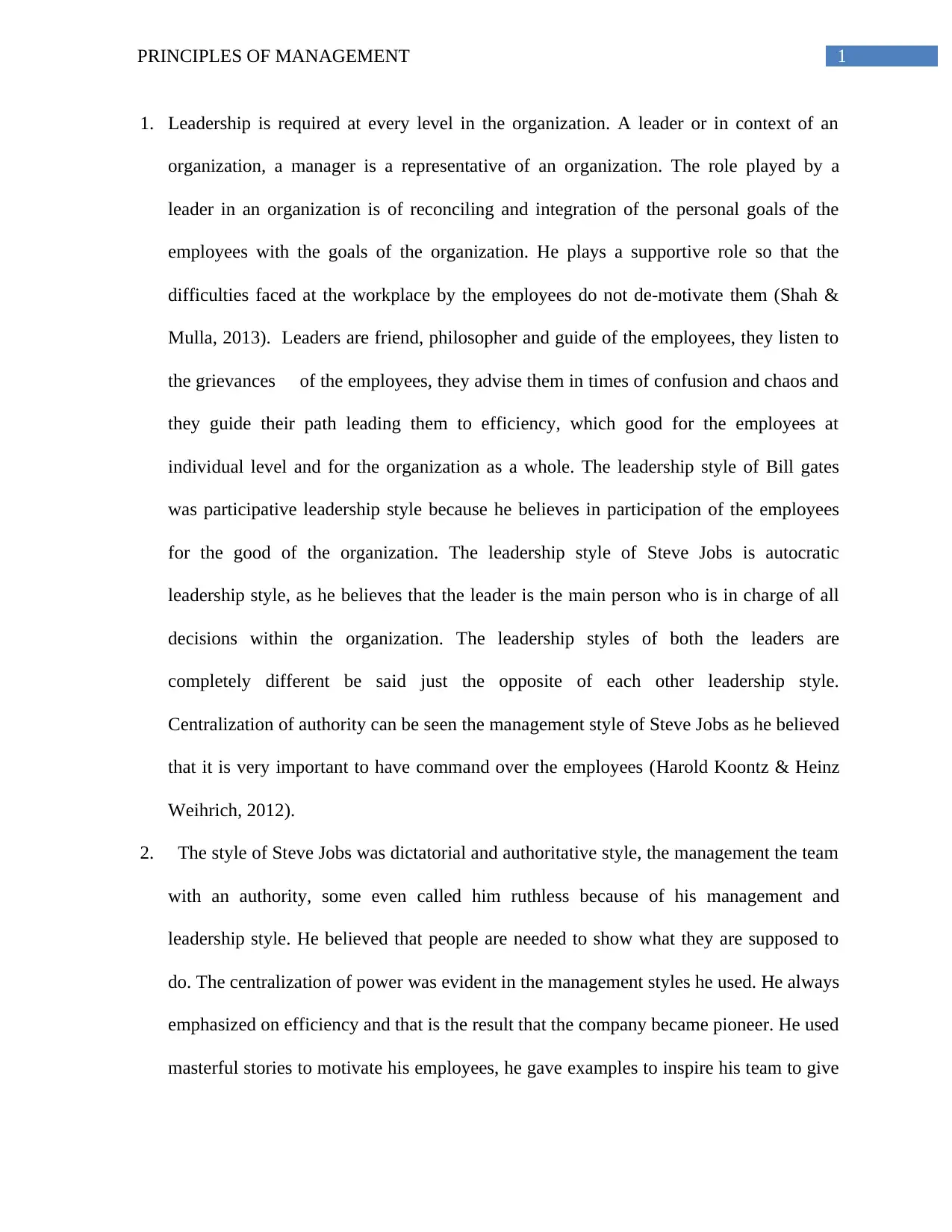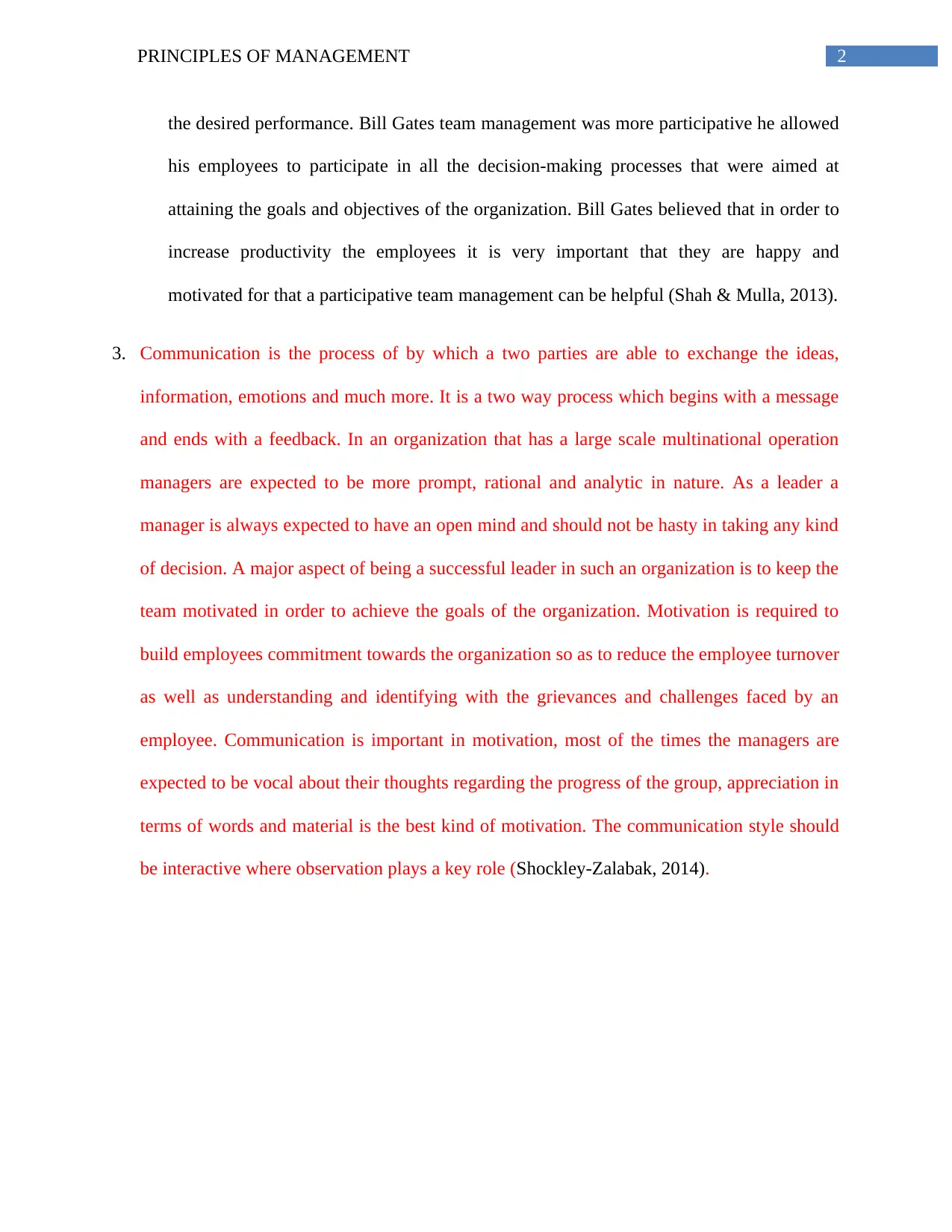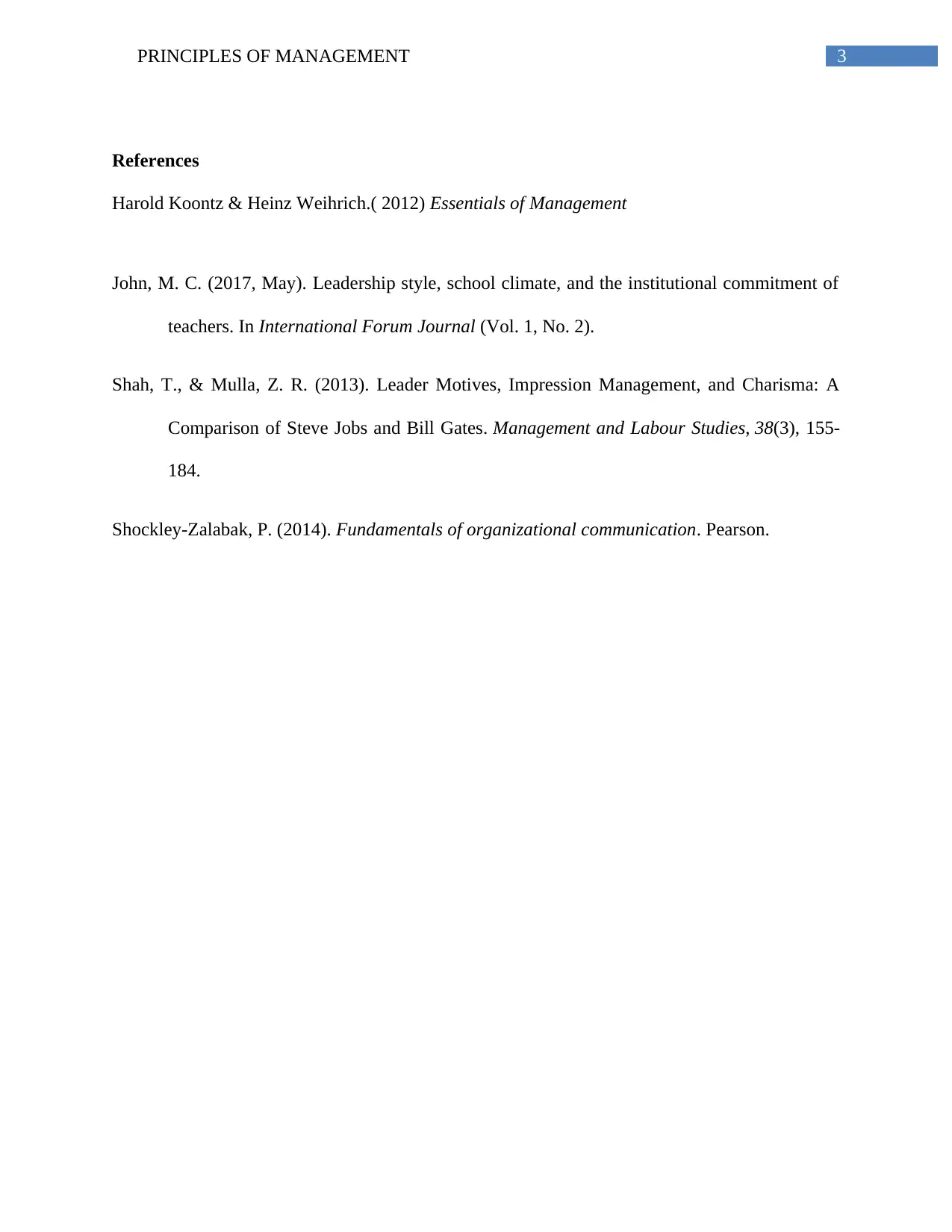Principles of Management Report: Leadership and Communication Analysis
VerifiedAdded on 2020/05/04
|4
|765
|124
Report
AI Summary
This report delves into the principles of management, focusing on leadership styles and communication within organizations. It contrasts the leadership approaches of Bill Gates and Steve Jobs, highlighting the differences between participative and autocratic styles. The report emphasizes the importance of communication in management, particularly in multinational corporations, and its role in motivating employees. It explores how effective communication, including providing feedback and appreciation, can boost employee commitment, reduce turnover, and improve overall organizational efficiency. The analysis includes key references to support the discussion on leadership, communication, and their impact on organizational success. The report also touches upon the significance of centralization of authority and its effect on the management style of leaders.
1 out of 4










![Leadership and Management Reflection Report - [Course Name]](/_next/image/?url=https%3A%2F%2Fdesklib.com%2Fmedia%2Fimages%2Ftd%2F609a50cd4c7044d196b9d89d4e436278.jpg&w=256&q=75)
![[object Object]](/_next/static/media/star-bottom.7253800d.svg)